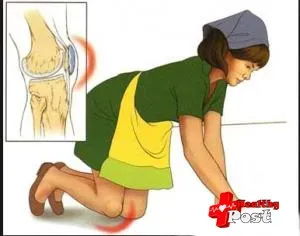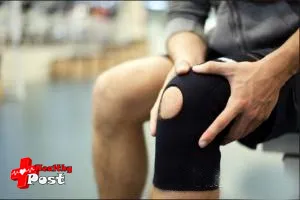
Prepatellar bursitis is a cause of anterior knee pain that cannot be ignored
Many people experience knee pain , some even repeatedly. However, they often don’t know where the pain is coming from. If you experience frequent knee pain and discomfort, consider prepatellar bursitis.
What is prepatellar bursitis?
Related article:
A set of exercise prescriptions for back pain and knee pain
Talk about the relationship between weight loss and knee pain
Can climbing stairs as a rehabilitation exercise also relieve knee pain?
The patellar bursa is located between the skin, patella, and patellar ligament, covering the lower half of the patella and the upper half of the patellar ligament. Patellar bursaenlargement due to synovial congestion , edema, and increase synovial fluid cause by trauma or infection is call prepatellar bursitis . Prepatellar bursitis generally refers to primary, sterile inflammation of the prepatellar bursa. Inflammation of the bursa in front of the knee is also known as waiter’s knee.

Symptoms : Discomfort on the inside of the knee , pain that worsens when climbing stairs; pain when touched, and a warm feeling, there may be swelling, knee pain, redness, and limited movement.
Cause: Excessive kneeling, directly hitting the front of the knee or the patellar tendon below.
Recovery: Usually recovers within a few weeks with proper treatment
Pathogenesis: How the bursa in front of the patella of the knee joint is caused. The bursa prevents friction between bones and soft tissues (muscles, tendons, skin and ligaments).
When there is a lot of pressure or friction on the bursa, the bursa will secrete more fluid to protect the tissue and reduce friction. At this time, the bursa is filled with fluid and even swollen, resulting in what is called bursitis.
Prepatellar bursitis is common in people who work in a kneeling position for long periods of time, such as miners and cleaners who kneel to scrub floors. Moisture, compression, friction, and minor injuries to the skin are also important causes of the disease.
Acute traumatic bursitis often presents with synovial edema and joint effusion, which resolve rapidly with treatment, allowing the bursa to return to normal. Chronic bursitis, however, causes irreversible pathological damage to the bursa. Initially, bloody exudate and synovial swelling develop, followed by chronic inflammatory changes, cyst wall atrophy, partial pseudovilli hyperplasia, and the formation of irregular fibrous scars as the bloody fluid organizes.
During an acute attack of prepatellar bursitis, conservative treatments such as local blockade and immobilization and rest can be chosen , which have certain effects. When there is a large amount of fluid accumulation, sterile puncture from the side to extract the fluid and then apply pressure bandage can be considered. For those with repeated attacks and hyperplasia of the cyst wall, surgical removal can be perform.
Nursing principles for prepatellar bursitis
1. Pay attention to weather changes and avoid dampness and coldness
Pay more attention to keeping warm, make sure the room is well-lit, and protect the affected joints with protective sleeves. Exercise regularly to prevent sports injuries, maintain a normal weight, and avoid obesity.

2. Avoid eating irritating, cold, and hard foods
Don’t eat foods that are difficult to digest, and eat foods that are easily digestible. We can choose foods that are both delicious and healthy. Don’t always eat out. The food outside is too greasy and bad for the body.
3. Change bad habits
Avoid excessive drinking and eat a balanced diet. Nutrition should be increase in the diet. Eat more milk, eggs, and soy products to supplement adequate protein and multiple vitamins, especially vitamin C and vitamin D. Also, take foods rich in calcium.
4. Prevent excessive fatigue
During the acute phase, you should reduce activity and avoid forced exercise. You can rest to keep the joints functioning. During the subacute or remission phase, you can perform exercise care to prevent muscle atrophy and joint stiffness. This can maintain optimal joint function.
Remember, accurately diagnosing the cause of your anterior knee pain is the best way to completely resolve your knee problem. This is only the first very important step. Seeking a professional and experienced physical therapist is the right start.

